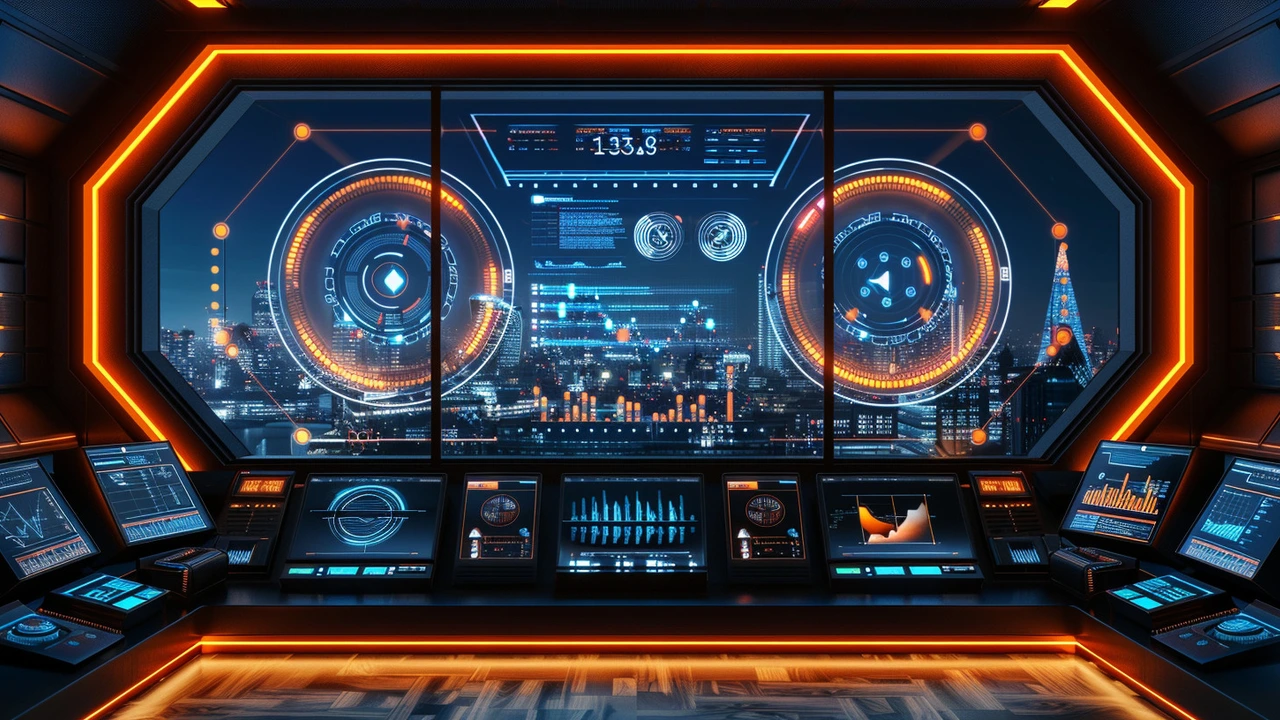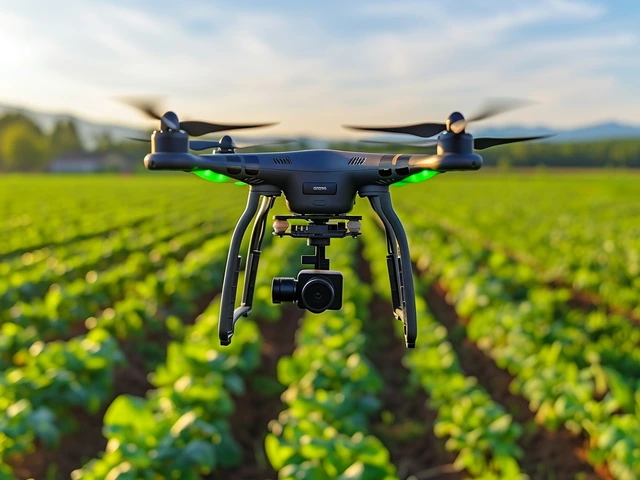The Future of Python and AI: A Dynamic Duo for Technological Growth

The Future of Python and AI: A Dynamic Duo for Technological Growth
Python and AI are transforming technology before our eyes. Python, with its user-friendly nature, has become the go-to language for developers. AI, on the other hand, is pushing the boundaries of what's possible in various fields, from healthcare to finance.
Combining Python with AI brings out the best of both worlds. Python's simplicity allows even beginners to dive into AI projects, making complex tasks easier to handle. In this article, we'll delve deeper into the essentials of Python, AI's impact on technology, how Python supports AI development, and some useful tips for your future projects.
- The Basics of Python
- AI's Role in Modern Technology
- Python's Influence in AI Development
- Tips for Using Python in AI Projects
The Basics of Python
Python is a powerful programming language that has gained immense popularity over the years. Its creation dates back to the late 1980s, when Guido van Rossum set out to design a language that was both simple and intuitive. Known for its straightforward syntax, Python makes coding easy to read and write, which is why it's often recommended for beginners. It's not only easy for novices but also highly functional for seasoned programmers who require powerful tools for complex projects.
One of the first things to note about Python is its simplicity. The language uses indentation to define blocks of code, which promotes readable and clean code. Unlike other programming languages that use curly brackets or keywords, Python's use of indentation helps developers avoid common pitfalls related to code structuring. This makes debugging and fixing code a lot easier, enhancing productivity significantly.
Python is also highly versatile. It supports multiple paradigms including procedural, object-oriented, and functional programming. This flexibility allows developers to tackle a wide range of applications, from web development to scientific computing. People often underestimate the importance of having a versatile language, but Python’s multi-paradigm approach provides a unique edge in developing diverse solutions.
Another significant advantage of Python is its vast standard library, often referred to as “batteries included.” This comprehensive library simplifies tasks like file I/O operations, system calls, and even web browsing. Because of this, developers don't need to write long lines of code to perform routine tasks; many functionalities are already built-in. Python is a language that encourages rapid development and dynamic typing. There is also a massive ecosystem of third-party packages available through the Python Package Index (PyPI), making it possible to extend the language for more specialized applications like data science and artificial intelligence.
Python's role in education is noteworthy too. Schools and universities around the world have adopted Python as a primary language for teaching programming fundamentals. Its simplicity lets students focus on learning the core concepts of programming instead of getting bogged down by complex syntax. Python has not only carved a niche in the professional programming world but also in the educational sector, helping shape the future generation of coders.
For those who are interested in transitioning into data science or AI, Python is often the recommended language to start with. The language boasts extensive libraries like NumPy, pandas, and Matplotlib, which simplify data manipulation and visualization. These libraries are particularly useful for those who find themselves working with large datasets. Python’s functionality extends to Machine Learning too, with popular libraries like TensorFlow and PyTorch, making complex algorithms more approachable.
It's interesting to note that some of the world's most popular tech companies, like Google, Instagram, and Spotify, use Python in their technology stack. They leverage Python's strong performance and clean code capabilities to enhance their systems.
According to Guido van Rossum, "Python is an experiment in how much freedom programmers need. Too much freedom and nobody can read another's code; too little and expressiveness is endangered."This quote from Python’s creator highlights how the language strikes a balance between ease of reading and writing code, making it user-friendly yet powerful.
Getting started with Python is also relatively easy and accessible. There's a wealth of resources available online, including official documentation, tutorials, and coding boot camps. Many development environments, such as PyCharm and Jupyter Notebooks, offer robust features that make coding in Python even more enjoyable. Additionally, the community support for Python is phenomenal, with numerous forums and user groups dedicated to helping coders troubleshoot and enhance their skills.

AI's Role in Modern Technology
The world is witnessing a technological revolution with the rise of Artificial Intelligence (AI). AI's role in modern technology cannot be overstated, as it continues to redefine various sectors, leading to unprecedented advancements. One of the most significant areas where AI has made a substantial impact is healthcare. From early disease detection to personalized treatment plans, AI is enhancing the way medical professionals approach patient care. For instance, AI algorithms can analyze medical images with remarkable speed and accuracy, often surpassing human capabilities.
In addition to healthcare, AI has drastically transformed the financial industry. Algorithms now predict market trends, manage assets, and even detect fraudulent activities before they escalate. The integration of AI in customer service through chatbots has improved efficiency and customer satisfaction. According to a report by PwC, AI could contribute up to $15.7 trillion to the global economy by 2030, illustrating its enormous potential.
Transportation is another sector undergoing a radical shift thanks to AI. Self-driving cars, once a figment of science fiction, are becoming a reality. Companies like Tesla and Waymo are leading the charge with autonomous vehicles that aim to reduce accidents and improve traffic conditions. AI also plays a crucial role in optimizing logistics and supply chain management, ensuring that goods are transported efficiently and swiftly.
In the realm of entertainment, AI is changing how content is created and consumed. Streaming platforms like Netflix use AI algorithms to recommend shows and movies based on user preferences, creating a personalized viewing experience. AI-generated art and music are also gaining popularity, pushing the boundaries of human creativity. Perhaps most fascinating is the role of AI in research and development. AI-driven simulations and data analysis accelerate the pace of scientific discoveries, enabling researchers to tackle complex problems that were previously unimaginable.
However, the proliferation of AI doesn't come without challenges. Concerns about data privacy, security, and ethical implications are at the forefront of the AI discourse. Industry leaders and policymakers are continuously working to develop regulations and frameworks that ensure the responsible use of AI. As Elon Musk once stated,
"AI is a fundamental risk to the existence of human civilization."
To harness the full potential of AI while mitigating its risks, a collaborative approach is essential. Educational institutions, businesses, and governments must work together to foster innovation while addressing the ethical considerations. Only then can we fully unlock the transformative power of AI and pave the way for a brighter future.

Python's Influence in AI Development
Python has become hugely influential in the field of AI development. Its popularity stems from multiple factors that work together to provide an extensible and rich ecosystem. First, Python's syntax is clean and readable, making it accessible for beginners and powerful for experts. This means that both academia and industry can leverage it for research, teaching, and real-world applications.
The vast array of libraries available in Python greatly aids AI development. Libraries such as TensorFlow, PyTorch, and scikit-learn are used extensively by professionals to build and train AI models. These libraries offer high-level APIs and abstract away much of the complexity involved in AI programming. This allows developers to focus on the design and improvement of their algorithms rather than the intricacies of production-level coding.
Another contributing factor is Python's strong community support. With thousands of contributors worldwide, there is a consistent flow of new tools, techniques, and support. Platforms like GitHub host countless Python projects that developers can use as references or directly integrate into their work. This collective effort fuels innovation and keeps the language cutting-edge.
The flexibility of Python also cannot be overstated. It can be easily integrated with other languages like C or Java, making it versatile. This adaptability allows organizations to optimize performance-critical parts of their AI systems, while still enjoying Python's simplicity. Therefore, businesses ranging from startups to tech giants like Google and Facebook invest heavily in Python-based AI development.
Moreover, Python is supported on multiple platforms, from cloud services to mobile devices. This portability ensures that models developed in Python can be deployed across various environments without significant modifications. Such cross-compatibility is essential in a world moving towards IoT and edge computing.
John Paul, an AI researcher at OpenAI, once said, "Python is like the Swiss Army knife for AI development. Its versatility and ease of use enable rapid innovation and experimentation."
Python’s integration capabilities also play a significant role. APIs allow Python to interface with web applications, enabling AI models to be seamlessly integrated into larger systems. For instance, REST APIs can expose machine learning models to web services, creating dynamic and intelligent applications accessible worldwide. This supports the development of advanced features such as recommendation engines and personalized user experiences.
Lastly, Python's educational resources are abundant, making it easier for new developers to enter the field of AI. Universities and online platforms offer multiple courses that focus on AI programming with Python. This democratization of knowledge has led to a talented and ever-growing pool of AI developers.
In sum, Python's influence in AI development can be attributed to its readability, extensive libraries, strong community, flexibility, platform independence, integration capabilities, and abundant educational resources. These elements combine to make Python an indispensable tool in the AI developer's arsenal.

Tips for Using Python in AI Projects
One of the first steps in leveraging Python for AI projects is understanding its robust ecosystem. Python boasts a variety of libraries that have made it a cornerstone for AI development. Libraries such as TensorFlow, Keras, and PyTorch simplify many aspects of machine learning, from neural networks to complex data transformations.
Before diving into any AI project, ensure you have a good grasp of Python basics. Understanding the syntax and core functions will help you focus on the more complex aspects of AI. A solid foundation in Python can be achieved through interactive courses or coding boot camps. Once comfortable with the language, start experimenting with smaller AI projects to build confidence.
Data manipulation and preparation are crucial in AI. Python’s Pandas library is a powerful tool for data analysis and manipulation. Use Pandas to clean and prepare your data, ensuring it's in the right format for your AI models. Another useful library is NumPy, which supports large, multi-dimensional arrays and matrices, along with a collection of mathematical functions to operate on these arrays.
Effective visualization of your data is another important aspect. Python’s Matplotlib and Seaborn libraries are top choices for creating detailed visualizations. These can help you understand the underlying patterns in your data, which is key in making informed decisions for your AI models. Visualization helps identify any anomalies or trends that might affect your model's performance.
Choosing the right library for your project is critical. TensorFlow, developed by Google, is known for its high-performance numerical computation and is well-suited for both research and production. Keras, built on top of TensorFlow, is user-friendly and great for beginners. It allows for quick prototyping but also has the flexibility needed for advanced models. PyTorch, backed by Facebook, is popular for dynamic neural networks and is favored in the research community for its ease of use and flexibility.
Another valuable tip is to leverage pre-trained models. These models, available through libraries like TensorFlow Hub and PyTorch Hub, can save a lot of time and computational resources. Instead of training a model from scratch, you can use these pre-trained models and fine-tune them to fit your specific needs. This approach can significantly accelerate your project, allowing for quicker iterations and adjustments.
Don't underestimate the power of collaboration. Platforms like GitHub are excellent for sharing your code and models, and for learning from the work of others. Engaging with the community can provide insights, tips, and even solutions to challenges you might face. Many professionals share their knowledge and provide feedback, which is invaluable for improving your skills and projects.
Finally, always stay updated. The field of AI is rapidly evolving, with new techniques and tools emerging regularly. Follow AI research papers, subscribe to relevant blogs, attend webinars and conferences whenever possible. Being well-informed about the latest advancements can give your projects a competitive edge and open up new possibilities.
Benedict Evans, a well-known technology analyst, once said, "The most interesting future uses of AI won't be found by improving what we're doing, but by finding completely new things to do". Keeping this perspective in mind can inspire you to think creatively and push the boundaries of what's possible with Python and AI.
About
CH Tech Development is a premier resource for the latest updates and insights in the world of technology development. We provide extensive information, articles, and guides on cutting-edge technological advancements. Explore our site to empower your knowledge about the dynamic field of tech development.
Latest Posts


Leveraging AI for Predictive Analysis: Revolutionizing Insights
By Ramona Bingley Jun 20, 2024

A Deep Dive into Coding: The Ultimate Programming Tutorial
By Silas Hawthorne Jul 26, 2023

How to Improve Your Coding Skills in 30 Days
By Victoria Gillis Sep 22, 2023

Write a comment